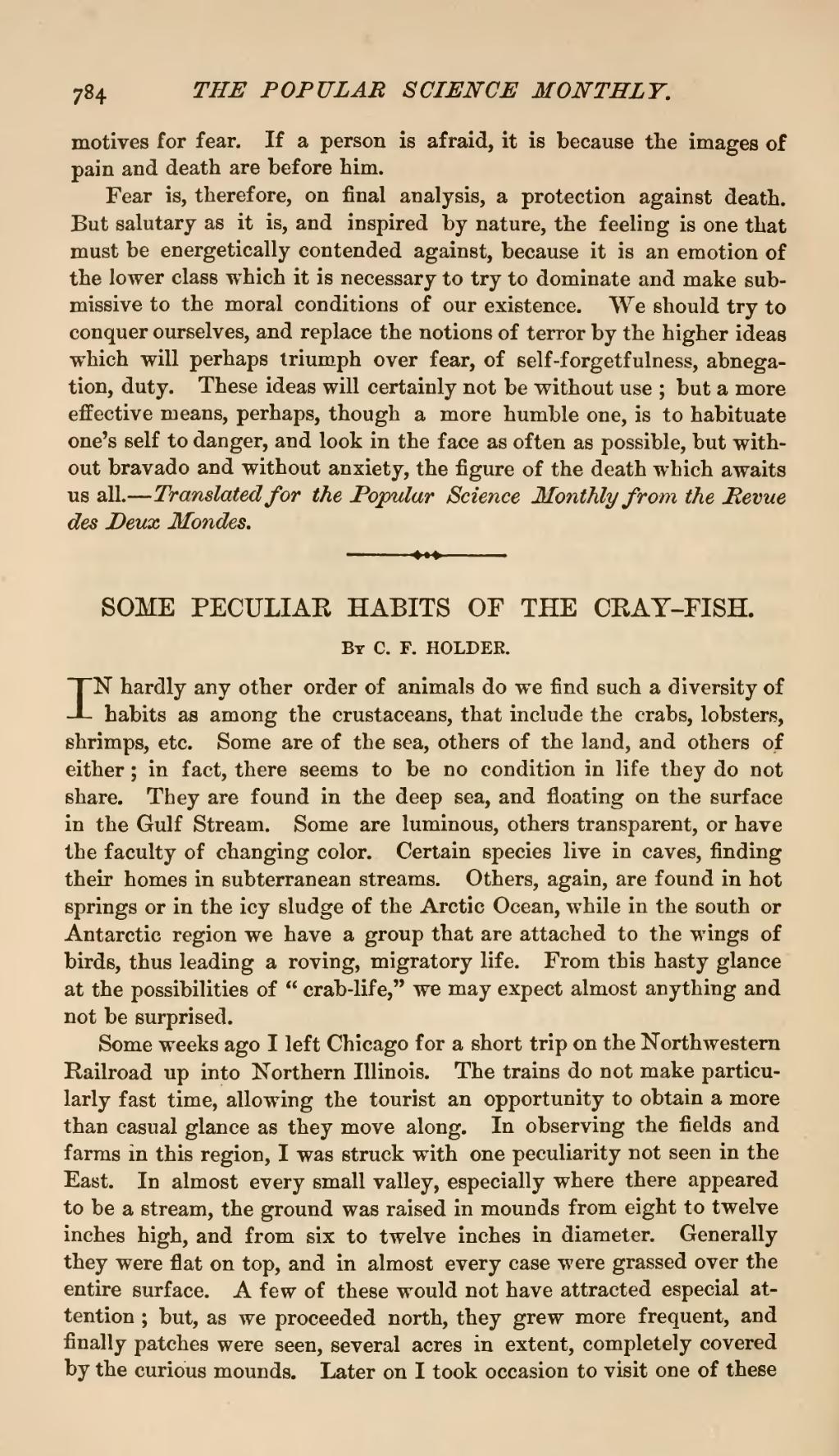motives for fear. If a person is afraid, it is because the images of pain and death are before him.
Fear is, therefore, on final analysis, a protection against death. But salutary as it is, and inspired by nature, the feeling is one that must be energetically contended against, because it is an emotion of the lower class which it is necessary to try to dominate and make submissive to the moral conditions of our existence. We should try to conquer ourselves, and replace the notions of terror by the higher ideas which will perhaps triumph over fear, of self-forgetfulness, abnegation, duty. These ideas will certainly not be without use; but a more effective means, perhaps, though a more humble one, is to habituate one's self to danger, and look in the face as often as possible, but without bravado and without anxiety, the figure of the death which awaits us all.—Translated for the Popular Science Monthly from the Revue des Deux Mondes.
| SOME PECULIAR HABITS OF THE CRAY-FISH. |
By C. F. HOLDER.
IN hardly any other order of animals do we find such a diversity of habits as among the crustaceans, that include the crabs, lobsters, shrimps, etc. Some are of the sea, others of the land, and others of either; in fact, there seems to be no condition in life they do not share. They are found in the deep sea, and floating on the surface in the Gulf Stream. Some are luminous, others transparent, or have the faculty of changing color. Certain species live in caves, finding their homes in subterranean streams. Others, again, are found in hot springs or in the icy sludge of the Arctic Ocean, while in the south or Antarctic region we have a group that are attached to the wings of birds, thus leading a roving, migratory life. From this hasty glance at the possibilities of "crab-life," we may expect almost anything and not be surprised.
Some weeks ago I left Chicago for a short trip on the Northwestern Railroad up into Northern Illinois. The trains do not make particularly fast time, allowing the tourist an opportunity to obtain a more than casual glance as they move along. In observing the fields and farms in this region, I was struck with one peculiarity not seen in the East. In almost every small valley, especially where there appeared to be a stream, the ground was raised in mounds from eight to twelve inches high, and from six to twelve inches in diameter. Generally they were flat on top, and in almost every case were grassed over the entire surface. A few of these would not have attracted especial attention; but, as we proceeded north, they grew more frequent, and finally patches were seen, several acres in extent, completely covered by the curious mounds. Later on I took occasion to visit one of these
